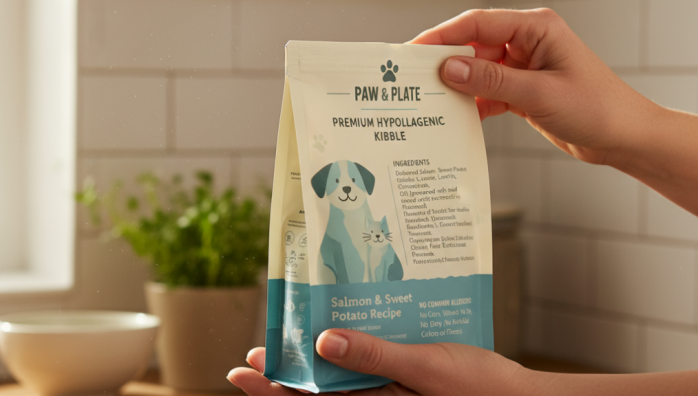Identifying Common Pet Food Allergens
by admin in Pet Care Basics 13 - Last Update November 19, 2025

I remember the endless cycle so clearly with my first dog, a beautiful Lab mix who couldn\'t stop scratching. We tried different shampoos, vet visits, and topical creams, but nothing seemed to offer lasting relief. It took me far too long to realize the answer was right in his food bowl. Once I started learning about food allergens, it was a complete game-changer, not just for him, but for many pets I\'ve cared for since. It\'s a frustrating journey, but identifying the culprit is the first major step toward a happier, more comfortable pet.
What\'s the difference between a food allergy and an intolerance?
It’s easy to use these terms interchangeably, but they are different. A true food allergy involves the immune system. The body mistakenly identifies a specific protein in the food as a threat and launches an inflammatory response. This is what causes the classic signs like intense itching, skin rashes, and chronic ear infections. An intolerance, on the other hand, is a digestive issue. The body has trouble breaking down a certain ingredient, leading to gas, bloating, or diarrhea. While less severe, it\'s still very uncomfortable for your pet.
The usual suspects: common allergens i\'ve seen
Over the years, I\'ve noticed a few ingredients that pop up time and time again when pets are having reactions. It\'s often not what people expect. Based on my experience and what veterinarians commonly report, here are the most frequent offenders:
- Beef: It\'s in so many foods and treats, making it a very common trigger due to high exposure.
- Dairy Products: Many cats and dogs are lactose intolerant, and the proteins in dairy can also be allergenic.
- Chicken: Just like beef, its widespread use in pet foods means many pets develop a sensitivity to it over time.
- Wheat: A common binder in kibble that can cause both allergic reactions and digestive upset in sensitive pets.
- Soy: Often used as a protein filler, soy is a known allergen for a significant number of dogs.
- Lamb & Fish: While less common than beef or chicken, they can still be the source of an allergic reaction for some pets.
Why the protein source is often the problem
Many people immediately blame grains, but in my experience, the protein source is the more likely culprit. An allergy is a reaction to a specific protein molecule, whether it comes from an animal or a plant. This is why simply switching to a \"grain-free\" food that still contains chicken might not solve the problem if your dog is allergic to chicken protein.
How to start identifying the culprit at home
The most reliable method I\'ve used, under veterinary guidance, is an elimination diet. It sounds complicated, but the concept is simple. You switch your pet to a food with a \"novel\" protein and carbohydrate—ingredients they have likely never eaten before. Think rabbit and potato, or venison and sweet potato. You feed this exclusively for 8-12 weeks. If the symptoms clear up, you\'ve found your baseline. Then, you can start reintroducing old ingredients one at a time to see which one causes the reaction to return. I can\'t stress this enough: this process requires patience and strictness (no other treats!), and it should always be done in partnership with your vet. They can help you choose the right food and ensure your pet\'s nutritional needs are met throughout the trial.











